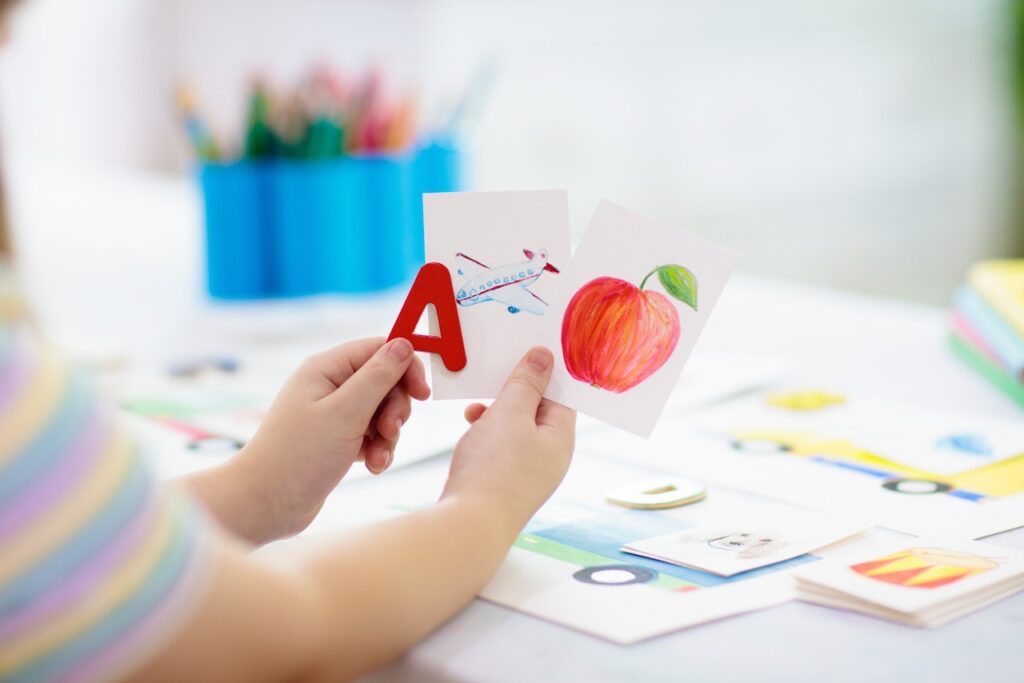
The topic of "learning to read" occupies every parent sooner or later. Especially if you are unsure whether your child is making enough progress, you will start looking for support options.
By way of introduction, it should be said that each child develops at his or her own individual pace. This includes the speed of the reading learning process. Nevertheless, it is important to identify deficits in good time and to improve your child's reading skills. Promote child.
There are children who can already read their first words and sentences at kindergarten age. However, this is the exception. Normally, the process of learning to read begins when the child enters school age, i.e. at the age of six. Only at this age are the necessary neuronal connections in the brain sufficiently mature to be able to decode printed letters as meaningful word pictures.
But even before the actual process of learning to read, children go through numerous preliminary stages. As early as six months of age, a keen interest in picture books can be observed in almost all infants. Toddlers enjoy being told stories. Sometimes children "write" with wavy lines, which means that they have understood the reading direction.
In the first grade of elementary school, children are finally taught to link sounds and letters. Through this, they learn to put the sounds together to form a complete word and to grasp its meaning.
Learning to read is a complex process that takes place in several steps. First of all, beginning readers must know all the letters, i.e. the alphabet. The latter can be encouraged through play even before children start school. In the next step, children learn to connect the letters. Once this milestone has been reached, syllables are read and connected.
After that, the child is able to recognize simple words with a few syllables at first glance (e.g., "mom"). With a little practice, more and more complex word pictures are grasped. In the course of the reading learning process, the vocabulary increases and a basic understanding of grammar develops.

Learning to read requires patience, Motivation and constant repetition. The process of learning to read can be divided into four steps:
The first step in learning to read is getting to know the different sounds. These include verbal and nonverbal sounds, as well as vowels, semivowels, and consonants.
The child understands that spoken sounds are converted into a written form with the help of letters. This can be illustrated in a playful way, e.g. with the help of a phonetic table.
You can also playfully search with your child for words that begin with a certain sound or contain certain sounds. Singing vowels is also a good exercise.
Knowledge of the different letters forms the basis of learning to read. It is important that the child memorizes not only the appearance of the letters in the long term, but also their sounds.
First, however, the graphic appearance of the letter is crucial. The child learns each letter individually. The best place to start here is with the vowels. During the entire process Patience asked. Wait until your child has mastered one letter before moving on to the next. Overstrained children are no longer receptive.
As soon as your child knows the vowels and consonants, you can begin to combine individual letter sequences into syllables. It is recommended to start with syllables that consist of two vowels (e.g. ua, oa). Then come the closed syllables (e.g. am, om) and finally the open syllables (e.g. "mo", "ma").
As soon as the child can read syllables with confidence, they can be joined together to form complete words (e.g., grandma, mom). To promote reading comprehension, it is advisable to connect the words with a picture. Many children also enjoy putting a "letter jumble" consisting of several syllables in the right order.
At this stage, the child puts the syllables together to form words. It is completely normal that the reading speed is still very slow and that the beginner reader does not yet grasp the words in a meaningful way right away. Over time, the number of known words increases, which makes the child more confident.
Fluent reading is best learned through regular repetition. However, don't try to rush your child. The more playful the process, the better. In the worst case, pressure to perform will cause your child to become frustrated and refuse to read.
Learning to read is one of the most important skills for leading an independent life. It is therefore all the more important that you offer your child the necessary support in good time if he or she should show any deficits. But even if there are no deficits, it is essential to encourage and maintain the desire to read. For elementary school students, this is best done through play.
How about visiting a bookstore together with your child and letting them pick out a book of their choice (suitable for children, of course)? The motivation to be able to read this great book yourself will be enormous.
Tip: First graders will be more comfortable if the letters are printed extra large and the book also has colorful illustrations. There is an extensive selection of books especially for beginning readers.
Another nice option is to establish reading together as a family ritual. Motivate your child to read something to you and praise him for his efforts, even if he can't read all the words fluently yet.

There are numerous guides for parents on the subject of "learning to read". We have summarized the best tips for you:
We have already mentioned it briefly, now we want to go into this important aspect once again. For your child to learn to read successfully, he or she must enjoy it. However, by building up pressure, you create frustration and demotivation. Let your child choose age-appropriate books that he or she would like to read. So-called first-reading books are well suited for initial success.
Always be aware that each child learns to read at his or her own pace. There is nothing wrong with other children reading more fluently at his or her age. You should only become aware if your child does not make any progress over a longer period of time. In this case, dyslexia (reading difficulties) could be present.
As the saying goes, practice makes perfect. This also applies to the process of learning to read. Therefore, you should practice with your child every day. However, the individual sessions should not be too long. Five minutes a day is quite sufficient for reading beginners.
Learning to read requires maximum concentration. For this reason, your child should not be exposed to any external disturbances while practicing. Sit together in a quiet room. The television, radio and cell phone should be turned off. This study shows that children learn to read better under these conditions. Study out.
Are you a bookworm who always has to have a book in your hand in your free time? Then there's a good chance that your child will copy this behavior. Children learn many behaviors from their caregivers.
By reading aloud regularly, you can awaken your child's interest in books even before he or she starts school. But even after that, reading aloud is a nice ritual to promote the joy of reading. This has also been confirmed by Stiftung Lesen in several studies:
The phonetic table is one of the most popular tools for learning to read. This is a table in which the different sounds are connected with letters and pictures (e.g. an A for apple).
The reading arrow is suitable for older elementary school students who can already read whole texts. It helps the child not to slip in the line. It also covers the words to the right of the current reading position. You can buy a reading arrow or simply make one yourself. The latter is especially fun for children.
On long walks or car rides, the joy of reading can be encouraged quite incidentally. Have your child read the various street signs along the way. Ask them to assist you in finding the right way.
Decoding words and understanding the text are two different things. Therefore, it is recommended to talk to your child about the content of the text after reading it: What exactly was it about? What did your child like most about the story? Which passages did he or she not understand?
Children are fascinated by technical devices. This fascination can be used in a positive way by offering your child special learning apps (e.g., the "Lesestart" app). This makes learning to read twice as much fun.
How long it takes for children to reach their Learning to read The time it takes to complete a course of study varies from student to student. While some students can read fluently after just a few weeks, others need until the end of elementary school to do so.
But what does a completed reading learning process even mean? Experts measure this by reading speed in words per minute. Reading fluently means being able to read aloud at normal speaking speed. Expressed in numbers, this corresponds to about 150 words per minute. At this stage, the child perceives reading as automated and no longer as strenuous.
Most children reach this milestone in the course of the second grade. The reading speed of 150 words per minute should be reached by the end of elementary school at the latest. Below we have compiled an overview for you of how the reading speed should develop over the course of the elementary school years:
With the help of coaching tools, you can effectively support your child in learning to read. In our free E-book "The 10 best tips for fun and success in learning". you will receive proven coaching methods that you can use to guide your child through a successful school career.
If you would like to get more intensively involved in the subject, you might consider a Learning coach training be interesting for you. As part of the training, you will learn how to Overcome learning blocks and boost your child's self-confidence can strengthen.

